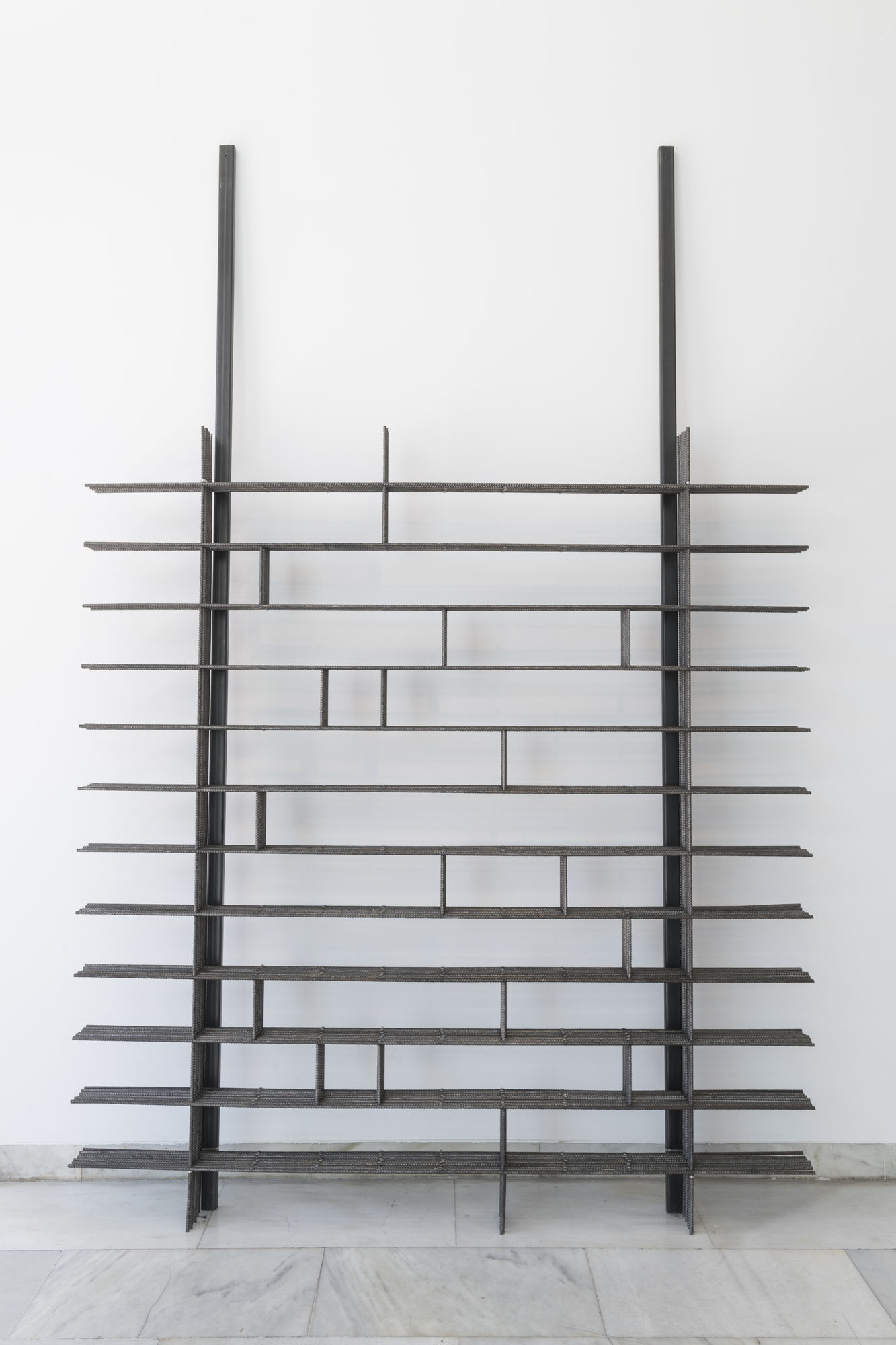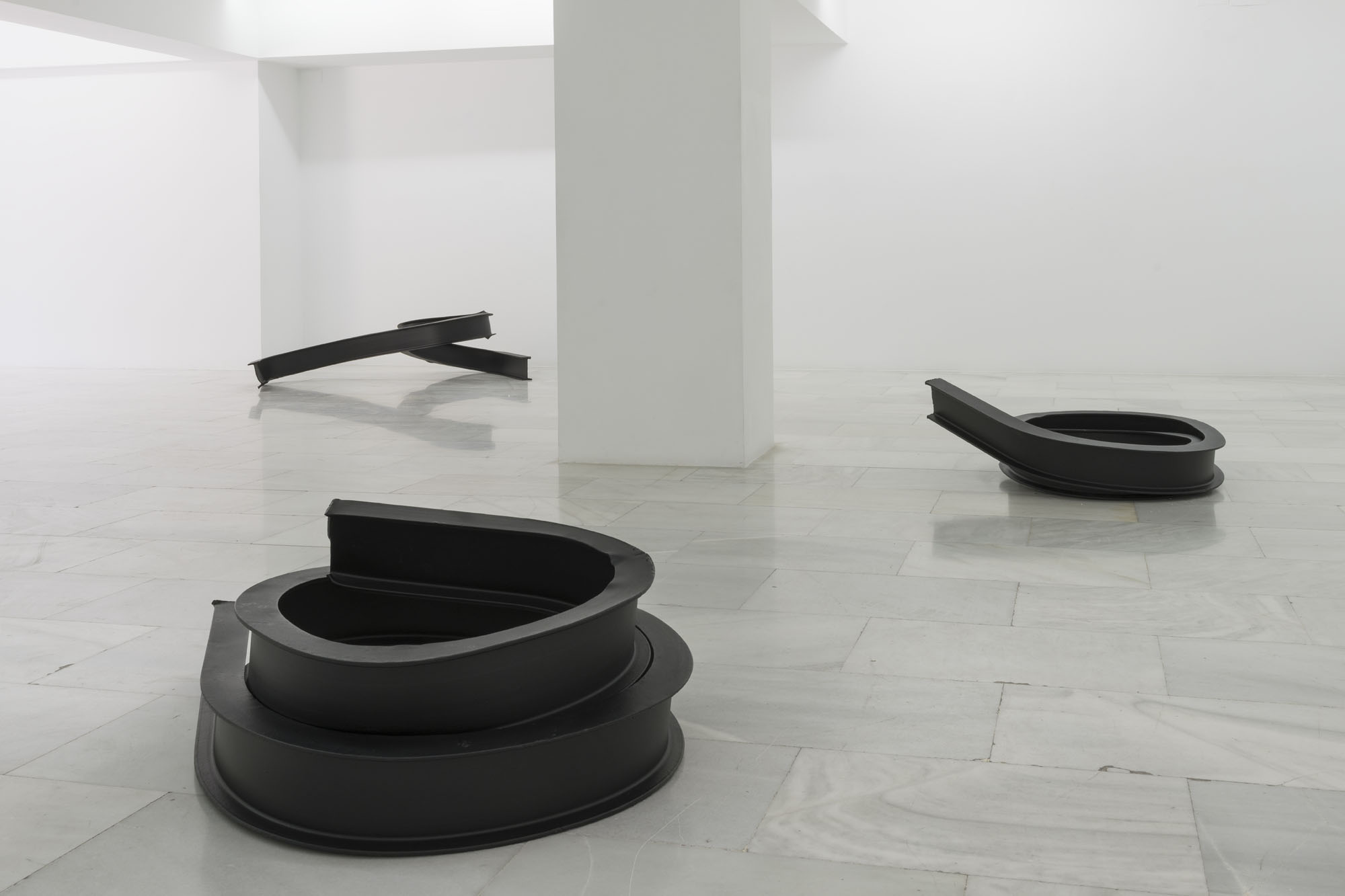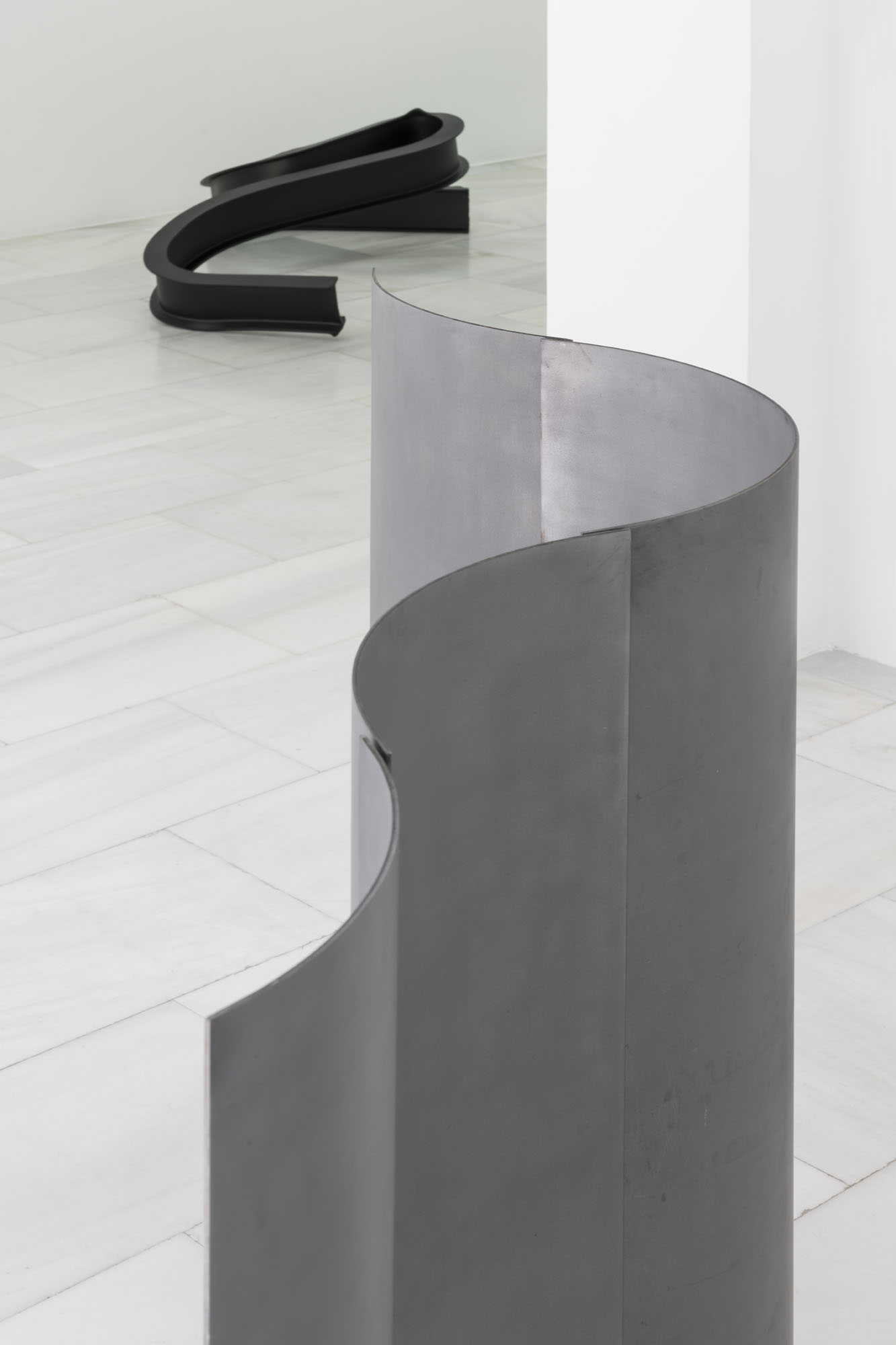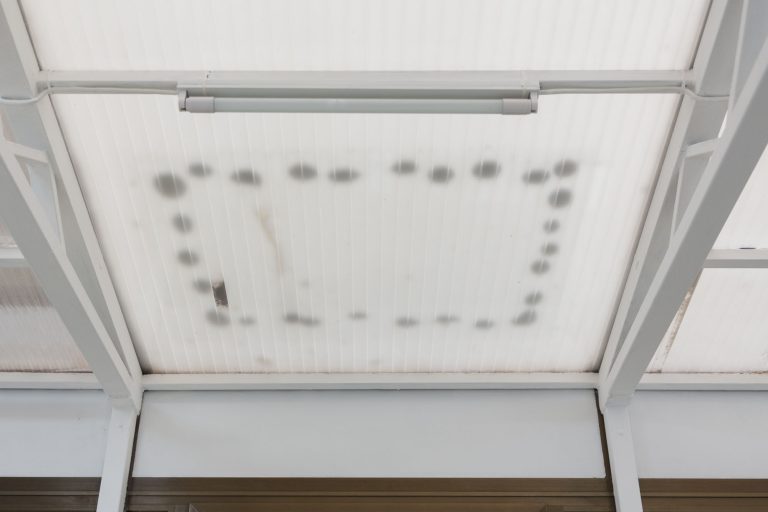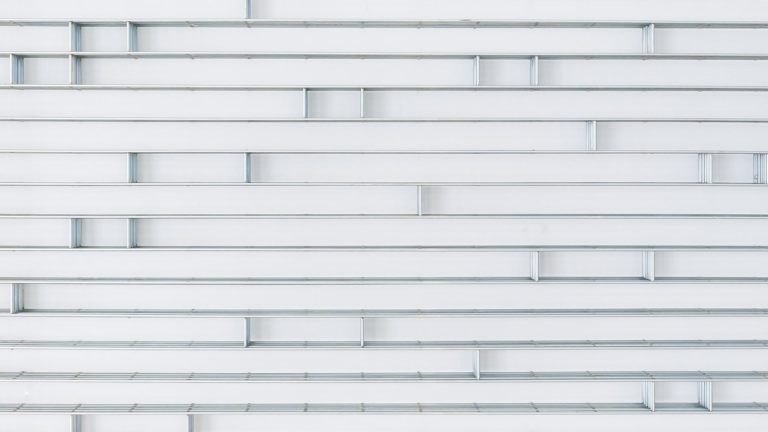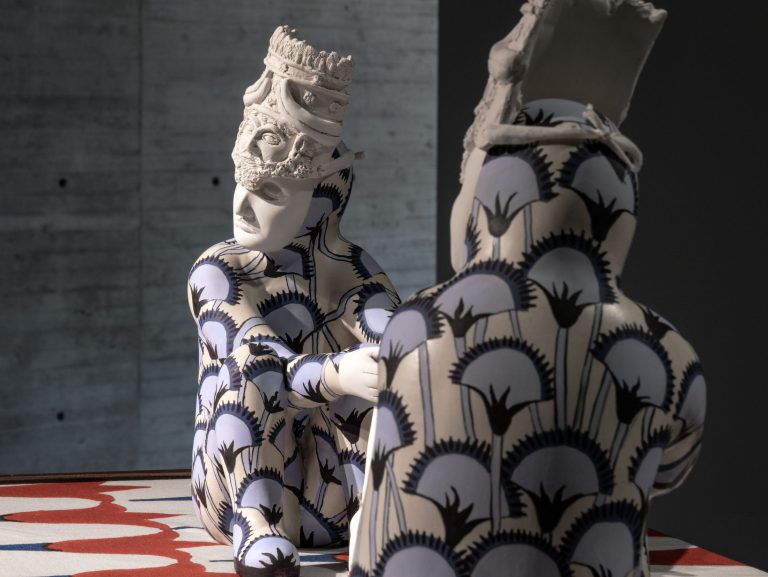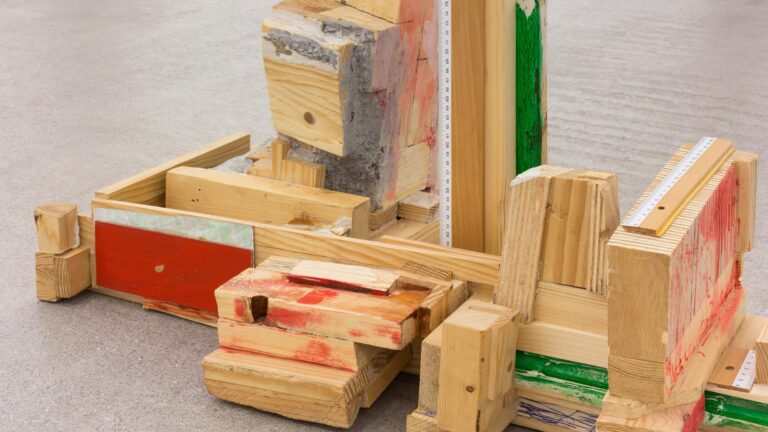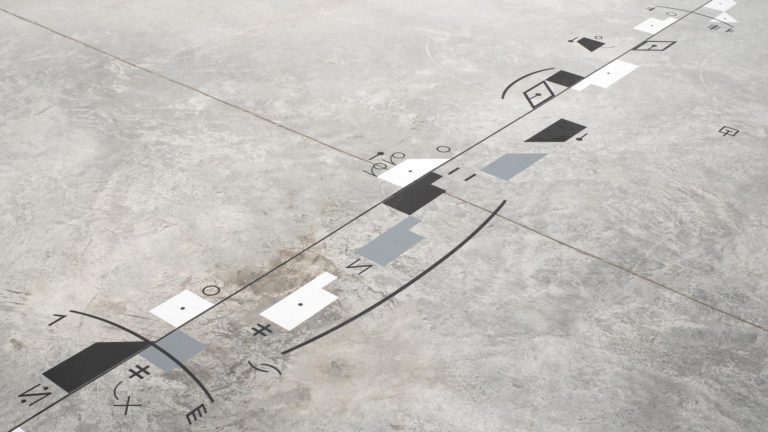Artist: Rafa Munárriz
Exhibition title: Espacio Relativo
Curated by: Johanna Caplliure
Venue: Sala De Arte Joven, Madrid, Spain
Date: May 29 – July 21, 2019
Photography: Roberto Ruiz / all images copyright and courtesy of the artist, Galería Pelaires and Sala De Arte Joven
The Relative Ineffectiveness of the Relative Space
When we think about the effectiveness of certain objects, as well as their disfunctionality, we note that the development would not be erratic in the sense of being equivocal. It is perhaps more proper to think of its conception as something wandering. That is, it goes from one meaning to another, it operates in one way or another, intermittently, in discordance with its original function. The transition or transformation of the action of a given object would broaden the vision we have of our world and our experience of it by means of the instruments we create. For if we take away the primary functionality of the objects that we create, and that mediate our relation with the others and the world, it is to afford them a different meaning, but also a different function that is perhaps yet to be determined, perhaps yet to come.
We could thus find, within a series of objects common to our cities, a defiant desire to do some soul-searching. In this sense, far from the self-absorption of the object itself, Rafa Munárriz shares with us a panoply that could identify with the structural forms of a large city: the straight and curved lines of streets, avenues, passages and motorways; the constructions in squares, buildings, public works and shared architectures; the behavioural elements of foundations: possible openings, doors, enclosures, railings, pavements, wire mesh fences and grates. All of these are transformed by the evocative capacity in the artist’s pieces. Thus, the objects taken from the urban outdoors: wire mesh fencing for the construction of buildings, veering towards an opening or a frame and destroying the work that it should be strengthening (Deconstrucción en reposo, 2019), beams twisted by the pressure of an open curve that prevents a racetrack from being fully closed (Hacia la curva cerrada fig.1, Hacia la curva cerrada fig.2, Hacia la curva cerrada fig.3, 2018 or the drawings Desde la curva cerrada – GP Valencia (línea), 2018), open or closed railings that no longer serve their purpose of protecting or obstructing the way(Bloqueo relativo – fracción curva 1, Bloqueo relativo – fracción curva 2, Bloqueo relativo – fracción curva 3, 2019), but, as with Van der Rohe and Reich, force well-trodden spaces to be negotiated in novel ways. But also the labyrinths (Ejercicios de coerción, 2014) that let us know that entrances and exits have been lost, when we fall prey to a difference in perception.
This relativity in the behaviour of materials and objects, given that they are transformed, is linked with the action and experience of those who act in and for the space- as you could observe in the installation Movimiento Implícito (2019) or in the piece Pavimento inverso – composición en caucho 1(2018). For this very reason, the supposed ineffectiveness of the cited objects recreates new formulas of the urban space, as well as of experimentation with the places inhabited by the agent. At times, it would appear that Munárriz destroys all of these life forms in the city, and yet he makes us see that, in its deconstruction, new symbolic capacities do come to the surface. That is, new structures with which our common future can be set out.







